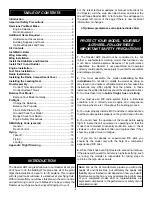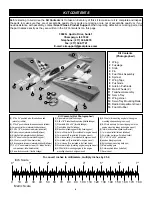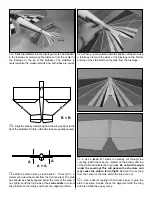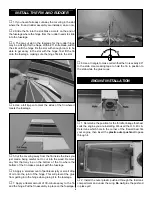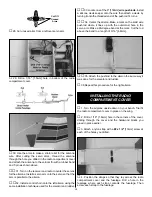
❏
5. Cut a piece of foam the size of the bottom of the fuel
tank. Place this foam inside the fuel tank compartment. Then
insert the tank into the fuel tank compartment.
❏
6. Attach a piece of silicone fuel tubing to each of the fuel
tank fittings. Pass the lines through the hole in the firewall.
Connect the lines to the engine. The line attached to the fuel
clunk attaches to the carburetor and the other to the pressure
fitting on the muffler. Note: Refer to the sketch at Step 3 to
see exact fuel line connection.
❏
7. Cut another piece of foam and place it on top of the fuel
tank, then reinstall the fuel compartment hatch to the fuselage.
❏
1. Cut away the covering in the wing to reveal the openings
for the two servos as shown in the above photograph.
❏
2. Trial fit the servo tray into the opening in the bottom of
the wing. It should fit between the rib in each half of the wing.
Trim the tray as needed to fit into the wing.
❏
2. Measure down from the surface of the wing 5/8"
[15.9mm]. On that mark draw a line that is parallel to the
bottom of the wing. Do this on the rib on both the right and
left wing panel.
❏
3. Locate the two hardwood landing gear rails. Using
6-minute epoxy, glue the rails in place on the bottom of the
lines you have drawn.
❏
4. After the glue has cured, glue the servo tray to the rails
with 6-minute epoxy. Be sure the side by side servo openings
in the tray match up with the two servo cutouts in the wing.
❏
5. Install a 6" [150mm] servo extension onto the end of
two servos. (Hint: Tape the connectors together to insure the
extension does not unplug from the servo.)
❏ ❏
6. Install one servo into the aileron servo bay in the
right wing, feeding the servo wire through the wing ribs,
exiting into the radio compartment.
❏ ❏
7. Drill four 1/16" [1.6mm] holes in the servo mounting
tray for the servo screws. Note: Installing the screws without
drilling the holes may result in the plywood servo tray splitting.
RADIO INSTALLATION
10


